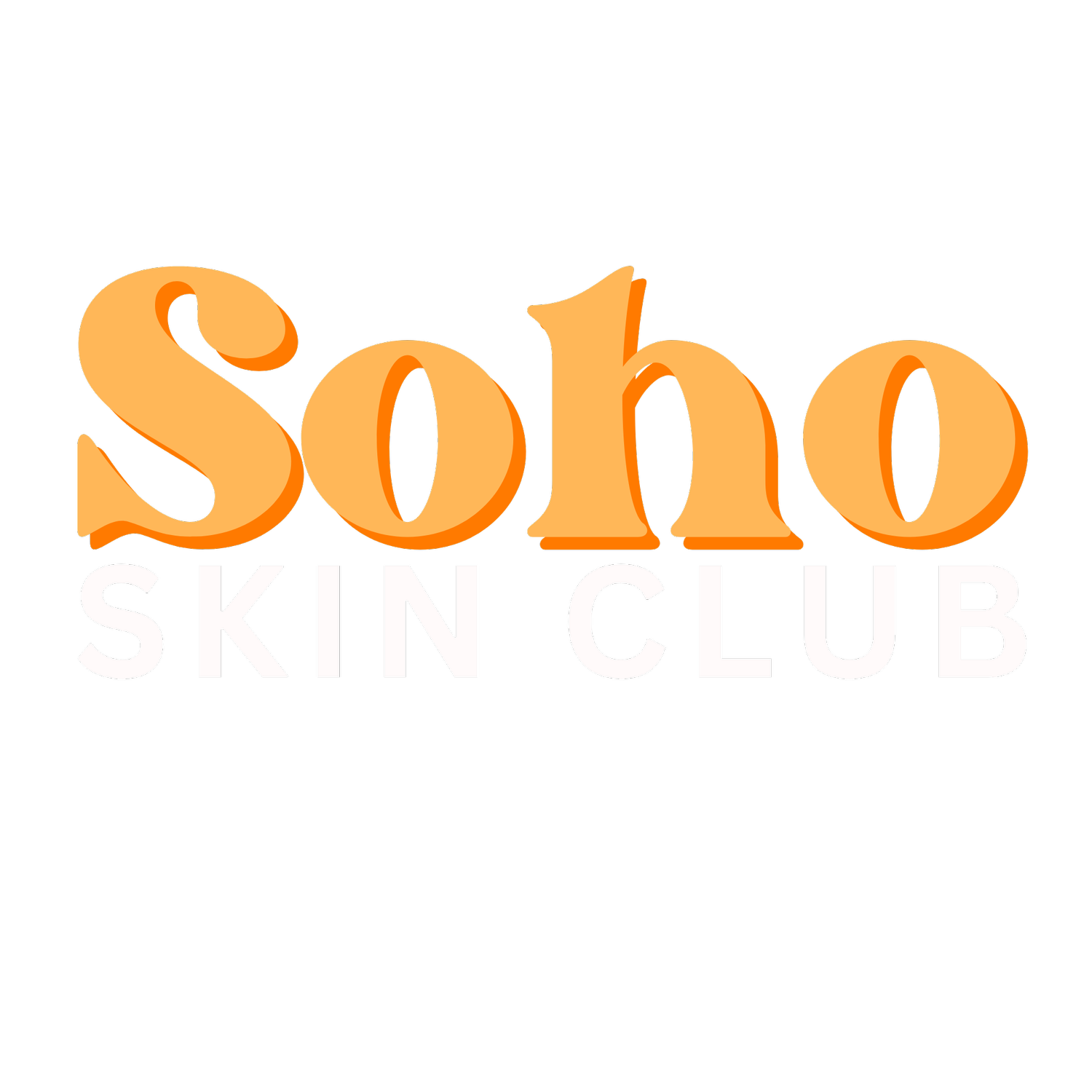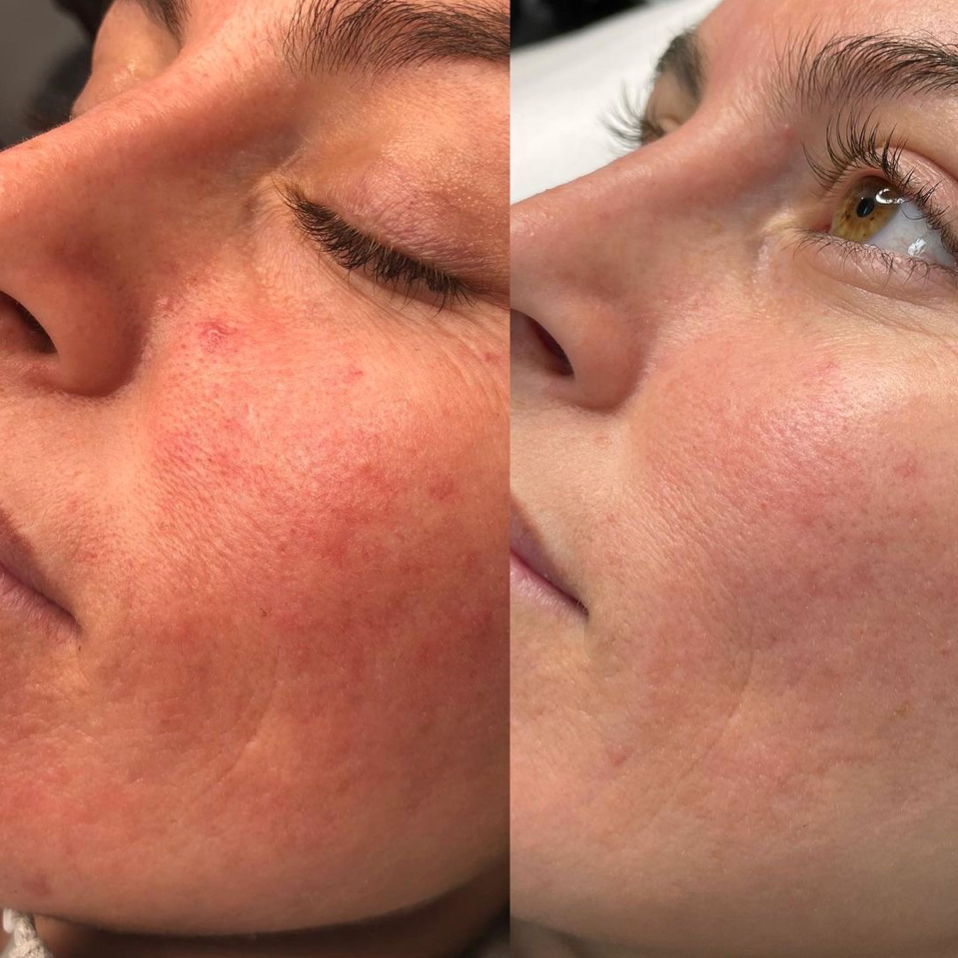Rosacea Prone Skin
Rosacea is a chronic inflammatory skin condition that most commonly affects the face, causing persistent redness, visible capillaries, sensitivity, and, in some cases, acne-like breakouts or skin thickening. While its exact cause is multifactorial—linked to genetics, immune responses, environmental triggers, and a compromised skin barrier—it can significantly impact confidence and skin comfort. At Soho Skin Club, we specialise in customised, gentle-yet-effective treatment plans designed to calm inflammation, strengthen the skin barrier, and reduce flare-ups. With a combination of targeted in-clinic treatments and barrier-supportive Medik8 skincare, we work to restore balance, reduce visible redness, and improve overall skin resilience.
The 4 Types of Rosacea
-
The Most Common form of Rosacea; Erythematotelangiectatic Rosacea (ETR) is the most common and early subtype of rosacea, primarily characterised by persistent facial redness (erythema), flushing, and the presence of visible, broken capillaries (telangiectasia), especially across the cheeks, nose, and chin.
Skin often feels sensitive, dry, or tight, and may react easily to skincare products or environmental factors such as heat, sun exposure, alcohol, spicy foods, or stress.
The exact cause of ETR is multifactorial and may involve a combination of :
Vascular dysregulation
An overactive immune response
A compromised skin barrier
Genetic predisposition.
Individuals with ETR typically have a heightened reactivity in their facial blood vessels, causing them to dilate too easily and stay dilated longer.
Early intervention is key, as untreated ETR can progress and become more difficult to manage over time. Targeted, gentle treatments that calm inflammation, strengthen the skin barrier, and reduce vascular activity are essential in managing this subtype effectively.
-
Papulopustular Rosacea (PPR) is a common subtype of rosacea marked by inflammatory breakouts that resemble acne, including red bumps (papules) and pus-filled lesions (pustules), typically found on the central face.
These breakouts are often accompanied by background redness, skin sensitivity, and a stinging or burning sensation. Unlike traditional acne, PPR does not involve blackheads and is often triggered by factors such as heat, stress, spicy foods, alcohol, hormonal fluctuations, or harsh skincare.
The condition is driven by:
Chronic inflammation
An impaired skin barrier
Heightened immune responses, which lead to;
Increased vascular
Sebaceous gland activity.
PPR can be particularly distressing due to its combination of redness and breakouts, but with a tailored treatment plan focused on calming inflammation, reducing bacterial activity, and restoring the skin’s barrier function, significant improvement is achievable.
At Soho Skin Club, we approach PPR holistically with gentle, anti-inflammatory treatments (*not for all clients with this condition) and supportive at-home skincare to soothe, clear, and strengthen the skin over time.
-
Phymatous Rosacea is a more advanced and less common subtype of rosacea that leads to thickened, bumpy, and uneven skin texture—most often affecting the nose (rhinophyma), but it can also impact the chin, forehead, cheeks, or ears. This subtype is characterised by excess tissue growth, enlarged pores, and a coarsened appearance due to the overgrowth of sebaceous (oil) glands and chronic inflammation.
Triggers such as:
Long-term untreated rosacea
Chronic inflammation
Genetic predisposition can contribute to its progression.
UV exposure
Excessive alcohol consumption exacerbate tissue thickening and vascular congestion.
While phymatous changes develop slowly, early detection and management are crucial to prevent further tissue distortion. Treatment often requires a combination of advanced clinical therapies to manage inflammation and texture, alongside professional guidance to strengthen the skin and reduce triggers that worsen the condition.
-
Ocular Rosacea is a subtype of rosacea that affects the eyes and eyelids, often appearing before or alongside skin-related symptoms. It is characterised by redness, dryness, burning, itching, and a gritty or “sand-like” sensation in the eyes. In some cases, the eyelids may become swollen, inflamed, and develop visible blood vessels or crusting around the lash line. Common triggers include sun exposure, wind, stress, spicy foods, and environmental irritants, all of which can exacerbate inflammation in both the skin and eyes. Ocular rosacea is believed to result from chronic inflammation and dysfunction of the meibomian glands (oil glands in the eyelids), leading to poor tear quality and eye surface irritation. If left untreated, it can lead to more serious complications such as corneal damage or vision impairment. Early diagnosis and a coordinated treatment plan—including gentle eye hygiene, soothing skincare, and trigger management—are essential for protecting both ocular and skin health. We wouldn't treat client with this condition at Soho Skin Club, but were always happy to guide you around gentle skincare routine. to support your skin.
Is it Rosacea or An Impaired Barrier?
Rosacea and an impaired skin barrier can appear very similar—both can cause redness, sensitivity, stinging, and irritation. However, there are key differences to help you tell them apart:
Impaired Skin Barrier:
Causes: Overuse of active skincare (like acids or retinoids), harsh products, over-exfoliation, or environmental stressors (cold, wind, dry air).
Symptoms: Dryness, tightness, flakiness, stinging when applying products, skin that feels raw or reactive.
Improves with: Barrier-repairing skincare, hydration, and stopping harsh products.
Progression: Usually short-term and resolves with gentle care.
Rosacea:
Causes/Triggers: Heat, spicy food, alcohol, stress, sun exposure, or internal inflammation.
Symptoms: Persistent redness (especially on the cheeks, nose, chin), visible capillaries, flushing, stinging, and sometimes breakouts (papules/pustules).
Improves with: Trigger avoidance, anti-inflammatory treatments, and medical skincare.
Progression: Chronic condition that can flare and worsen over time if left untreated
An impaired barrier can lead to rosacea or make it worse. Ongoing barrier damage can trigger inflammation and vascular sensitivity, contributing to rosacea symptoms.


